Hellcat is ultimate Challenger big-boy toy
By John Gilbert
Dodge intends to end production of the Viper sports car when the currentBu supply runs out. But if it’s painful to accept that the Viper’s time has elapsed, so to speak , it’s easier to accept if you’ve driven the Dodge Challenger SRT Hellcat.
The two-seat Viper has an overwhelmingly powerful 8.4-liter V10 engine delivering 645 horsepower and 600 foot-pounds of torque, but it can’t match the bark, or the bite, of the Challenger Hellcat. Lighter and leaner, the 2-plus-2 Challenger has a highly refined 6.2-liter Hemi V8, supercharged to generate 707 horsepower and 650 foot-pounds of torque, meaning the Challenger Hellcat’s bite makes it the most powerful production car in the country.
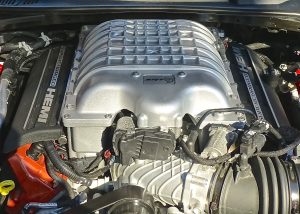
Hellcat’s heart is a 6.2-liter supercharged Hemi V8, with 700 horsepower and 650 foot-pounds of torque.
No less impressive is its bark. Turn it on, and the Challenger Hellcat will turn you on, with a soul-stirring roar that shakes the ground and rattles the walls and leaves you smiling with relief, knowing you didn’t blow out any of the neighborhood windows.
The Viper is a harsh, no-compromise brute, while the Challenger can be bought mild, with a supple suspension under the base 3.6-liter V6, or the 5.7 or even 6.4 ScatPak V8s. But when you select the SRT Hellcat’s supercharged and specially built 6.2 liter V8 gem, you are at the pinnacle.
The Challenger is Dodge’s future-retro coupe that as a faithful reproduction of the 1970s Trans-Am coupes, clearly beats both the Mustang and Camaro. It also has become the largest-selling car in Dodge’s livery. To beat the competition in performance will cost you, of course.
In basic V6 form, a Challenger provides the same look for under $30,000. Moving up past the normal Hemi to the Hellcat moves the sticker price up, and up again, to $62,495. The stunning red Hellcat as-tested during a week on the North Shore of Lake Superior and the cliffs of Duluth was an SRT Hellcat with a sticker of $71,370. That is still $25,000 or so less than the most basic Viper, however, and it fills up all your known senses and lets you discover a few you didn’t know you had.
We can start with the visual, because the factory test Hellcat was painted Redline Red TriCoat Pearl, a darker shade than the usual “arrest-me red” featured on msny sporty cars, and the paint is so loaded with metallic particles it fairly glows at you when the sun hits it. I thought it was a very attractive paint job; my wife, Joan, said if Dodge made the right vehicle in our price range in that color, she would buy it.
Open the door and you are greeted with remarkably rich Laguna Leather SRT bucket seats and, tastefully appointed aluminum trim as occupant-viewed accents. The unique gadgetry that sets the Hellcat apart is located on the large center screen, and imbedded between the large speedometer and tachometer on the instrument panel. That’s where the unique fun of owning a Hellcat comes home to roost.
You code your smart-phone in for hands-free duty, and start playing with the various set-ups. On one page, you get brightly colored choices that let you set the power, steering, suspension, and various other driving plans to street, sport, or track. I didn’t discover this trick until I had spent a couple of days jarring every bone in my body over simple road irregularities. Once I softened up the ride and suspension settings, leaving the engine and steering settings on sporty, the Challenger was much more user-friendly.
I recalled from the introduction of the vehicle that one of the car’s high-tech gimmicks is the red and black key fobs. If you use the red one, you get the full 707 horsepower and 650 foot-pounds of torque; if you use the black one, it inhibits the power to 500 horsepower. So if you’ve got a teenage kid who wants to take the car for a spin, you can give him the black fob…because we all know (wink, wink) you can’t get into much trouble with “only” 500 horsepower.
Over the years, Dodge’s SRT arm has refined the top Challenger. It now rides on 275/40 R20 Pirelli P-Zero tires, mounted on 20-inch matte-black forged wheels, measuring 9.5 inches wide. The Hellcat suspension holds those grippy tires properly in line, and you can control all the power with the reinforced 8-speed TorqueFlite transmission, which, in turn, can be controlled by fingertip paddle shifters on the comfortably padded steering wheel.
But there’s more, and if money is no object, it’s hard to imagine having more performance-oriented legal fun than with a Challenger Hellcat. Fill it up with fuel. Premium seems logical, but there is no designation, so you could try to sneak by with midgrade or regular. Then find a straight, smooth, and remote stretch of highway. Time to get ready.
Rack over the computer apps to find performance, and summon up the proper screen. Switch the electronic toggle under power to 700, te trans setting to track, the paddles to on, toggle the traction from street past sport to track, and do the same with suspension — from street to sport to track. Now go back to the instrument cluster and with your left thumb scroll down until you get to Performance. Click it, and set your choice of 0-30, 0-60, 0-100, or quarter-mile. Next it advises you, “To launch, press brake and quickly apply full throttle.” Another screen comes up to start a digital countdown — 5, 4, 3, 2, 1.
Cut the timing as close as you dare, and the launch control instantaneously releases the Challenger Hellcat with as much urgency as you dare to apply. You can paddle shift it or let it shift by itself, but you will get to your predetermined speed — 30, 60, 100 or quarter-mile — as swiftly as you ever could, this side of a Pro Stock.
When you finish, you will see an accurate electronic readout that tells you your elapsed time to the hundredths of a second. And it will tell you your reaction time. If you are not cutting your starting time close, your reaction time will be lousy; if you cut it close, it will be good. It is, in effect, as neat as a professional drag-race timer.
If your chosen deserted roadway is rural, you might be able to make 0-60 runs without violating the law! If so, you could spend an afternoon, and a tankful of fuel, having the most fun you can have in a car, this side of Brainerd International Raceway.
Amazingly, you can drive the Challenger Hellcat routinely, enjoying all the safety amenities and only small doses of the noise with the precise handling and steering, and you might get it over 20 miles per gallon on the highway.
You don’t have to drive it to its limits, but if you’ve spent all that money, why wouldn’t you?
The Viper is dead. Long live the Challenger SRT Hellcat.


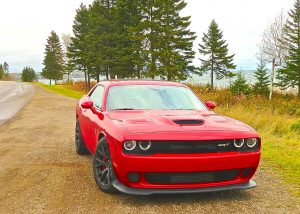
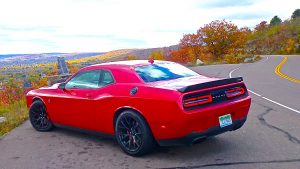
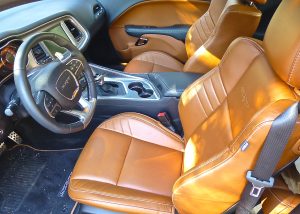
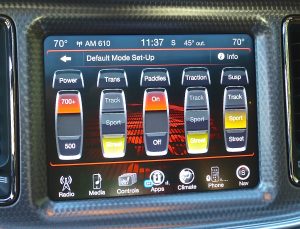
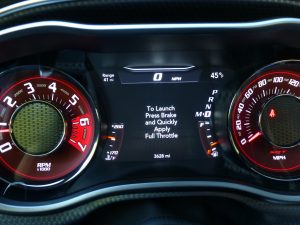
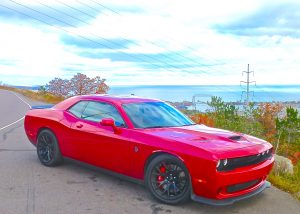
 John Gilbert is a lifetime Minnesotan and career journalist, specializing in cars and sports during and since spending 30 years at the Minneapolis Tribune, now the Star Tribune. More recently, he has continued translating the high-tech world of autos and sharing his passionate insights as a freelance writer/photographer/broadcaster. A member of the prestigious North American Car and Truck of the Year jury since 1993. John can be heard Monday-Friday from 9-11am on 610 KDAL(www.kdal610.com) on the "John Gilbert Show," and writes a column in the Duluth Reader.
John Gilbert is a lifetime Minnesotan and career journalist, specializing in cars and sports during and since spending 30 years at the Minneapolis Tribune, now the Star Tribune. More recently, he has continued translating the high-tech world of autos and sharing his passionate insights as a freelance writer/photographer/broadcaster. A member of the prestigious North American Car and Truck of the Year jury since 1993. John can be heard Monday-Friday from 9-11am on 610 KDAL(www.kdal610.com) on the "John Gilbert Show," and writes a column in the Duluth Reader.